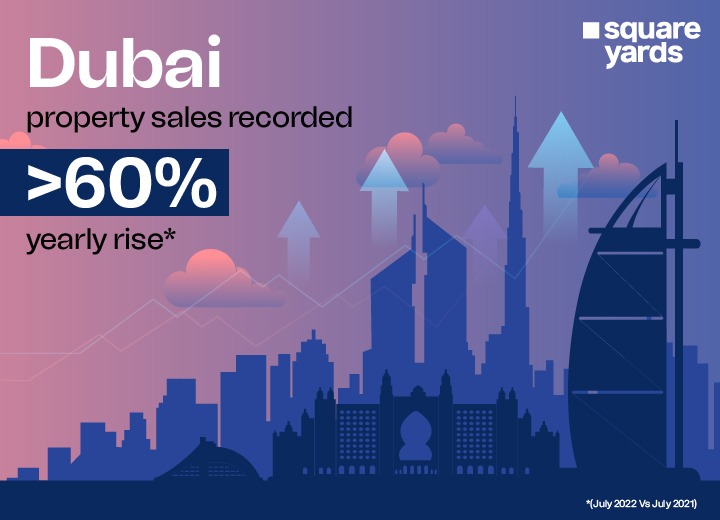Data governance is the method of streamlining and organising business processes to enhance compliance access and cooperation with the data. Following this method can allow users to enjoy greater creation of data value despite the limitations for privacy and security.
It is not uncommon for people to hear ‘no’ every time the term data governance is mentioned. If we consider common notions around data governance, then people generally assume that either data cannot be used to meet an end goal or simply they don’t have the rights.
People generally fail to understand that data governance is more than just an authority figure with rules that baffle you at every turn. Modern data governance can grant your business the freedom to grow extensively. It helps the company expand rapidly while staying compliant with the internal and external policies.
In this article, let’s go through the concept of data governance and how it can help your business reach unparalleled heights.
Table of contents
What Really is Data Governance?
Data governance is the best alternative to introduce a more data-centric approach to your day to day business operations. Having a proper understanding of the ins and outs via data is a potent tool, and executives who can drive its integration can easily assume leadership positions within the organisation.
Data governance is a truly unique concept. This is so because, while data governance is supported by various technological advances, it is not a technology in itself. Data governance in its true form aligns the organisation with rules to ensure that the data does not turn into a liability.
In an increasingly data-centric business environment, a proper data governance framework can help fuel the growth and data governance of the organisation.
Today, data governance technology has become an integral part of a successful organisation. Currently, most organisations take advantage of the same as a crucial business discipline that supports positive outcomes, such as an increase in revenue or compliance with regulatory requirements.
Governance is the founding stone and backbone of data intelligence. Since the concepts of data management are often misunderstood, data intelligence acts as the umbrella term to aid the companies in finding, interpreting, and fully utilising all the data-guided assets.
Additionally, other technology solutions like data governance and data catalogue get a lot simpler when an organisation aims to be more data intelligent rather than just employing point solutions. Other components like data management and data quality also factor into a data intelligence strategy to provide positive business outcomes.
How is Data Governance Beneficial: Explained with Examples
A sound data governance strategy ensures that the huge amounts of data that an organisation gathers can be used to increase business value. Data assets that are unregulated and not bound by rules can lead to redundancy, creating productivity shortages.
Data governance implies that a company can trust their data to answer all the difficult questions and overcome obstacles. However, having bad or wrong data will, more often than not, lead to bad decisions that can be detrimental to the organisation.
Check out the two examples below to understand how wrong data can lead to prospective business losses:
Example 1: Customer List Management
Let’s assume a company is plagued by data inconsistencies. The names of their customers are mentioned differently across their main systems like sales, logistics, or customer care.
Now, if the company does not have a sound data governance strategy, it would mean that these issues will not be addressed, and the intelligence about the customers will either be limited or basic. This is simply not acceptable to any respectable organisation.
Example 2: Compliance
Another example we can take a look at is compliance with regulatory authorities. Privacy and compliance laws must be followed at all times else defaulters run the risk of incurring heavy fines. Without a data governance framework, an organisation cannot verify whether specific information about the individual exists or not.
How does Data Governance Help Streamline an Organisation?
Every successful organisation is aware that a detailed data governance framework is essential to get the best results from all their business decisions.
Given below are some of the specific areas in an organisation wherein data governance offers a cornucopia of benefits.
- An effective data management plan ensures that the organisation is able to manage its data assets in a way that incurs maximum benefits.
- Proper management and utilisation of customer data enhance the scope of business opportunities in the future.
- Governed data can be positively used to reduce the business cost of regulating the procurement process of supply chains.
- It can also be used to meet all the legal and compliance needs of businesses.
- Implementing a proper data governance plan would also help sharpen, streamline and propel the management of business finances.
Data that has consistency issues is viewed as unreliable by management to get profitable business insight. Thus, any organisation that seeks to derive value from their data is required to come up with a detailed data governance framework that covers all the data assets they wish to protect and use.
The data needs for every organisation is different, and thus, they will need to formulate rules and policies customised to the nature and market of an organisation.
What are the Goals of Data Governance?
As mentioned above, the goals of an organisation differ according to the market they are operating in. Thus, each organisation will have different goals for their data and governance.
Some of the goals that a data governance plan helps an organisation achieve are:
- Ensuring that all the business decisions are data-driven, strengthening its data maturity.
- Removing redundancy and data inconsistencies.
- Knowing where your data assets are applicable and how to use them.
- Drafting internal and external policies to meet regulatory compliances.
- Have more trust in the data gathered by the business.
- Be assured in the fact that the data assets will not be misused by establishing data-driven security measures.
- Eliminating the time required to assimilate data or create reports.
All in all, data governance removes all roadblocks in an organisation, maximising the usage of data assets. Any data that does not help the organisation reduce costs or grow as an asset is, in actuality, not being used to its full potential. Data governance helps in achieving such results by avoiding impulsive decisions.
3 Major Principles of Data Governance
Given below are the three essential principles that an organisation should keep in mind while drafting a data governance plan:
Transparency
Transparency in data management means knowing where the company’s data assets reside. It also stands for knowing what kind of data assets exist and how potential customers will interact with this data. Data transparency is also helpful for operations related to privacy or security matters. This is of utmost importance considering all the growing scrutiny and awareness among the public.
Accountability
Organisations need to inculcate a sense of accountability around their data assets. Internal policies should be drafted in such a way that makes sure that employees are accountable for how they choose to handle data assets.
Some of the ways in which more accountability can be introduced in the organisation are:
- Entrusting employees with more roles and responsibilities all over the data cycle.
- Regulating who has access to the data so that it is only available to people who require it to perform their jobs.
- Record and document how individuals use the data and how it has changed over time.
Engagement
It is crucial to understand that data governance works only if all the users adopt data governance practises. It is imperative to engage all the stakeholders. This can be achieved by properly interpreting the data user’s needs and demonstrating how data governance can help in tackling any challenges or problems.
If the users buy into the belief that data governance can help make their lives easier, they are more likely to adopt data governance policies. However, it is not enough to merely just tell the benefits of data governance. The organisation needs to implement a training and education system. This will help users better comprehend how they can take advantage of data governance.
How to Build a Data Governance Network
Policies, rules, processes, and the correct organisational structure are some of the components of a sound data governance framework. It would be foolish to think one can achieve good data governance practises by using technology alone. Any business initiative that includes people and processes which utilise technology and data governance is just the same in this regard.
The executives in the organisation are also an integral part of any data governance framework. For the concept of data governance to survive at the grassroots level, it has to be well understood and accepted in the boardroom. This requires the utilisation of considerable resources in terms of money and people. Empowerment is key to any data governance plan.
4 Common Steps to Build a Data Governance Network in an Organisation
- The first step to constructing a data governance framework is to draft the organisation’s objectives in a mission statement properly. The organisation should also state clear KPIs (Key Performance Indices) to track the development. This way, you can ensure that the organisation’s efforts are directed at achieving future objectives.
- Next, the framework should include all the terms relating to data governance. Lay down the rules and policies. Plan all the processes and procedures. Draft a business glossary and an inventory of all the data assets. A significant portion of the organisation’s knowledge, experience, and energy will go into achieving this step.
- Establish an accountability system throughout the data life cycle. The organisation will have to determine who will be accountable for which part of the program and who will be responsible for the final decision making.
- Finally, once the blueprint for the data governance plan has been laid out, the organisation will need to choose a platform that best suits its vision. A good technological platform can help gather sub-data from various networks, implement policies, and create a business glossary. An integrated platform helps in ensuring that all these capabilities collaborate efficiently.
This is all an organisation needs to have to execute a smooth data governance plan to be implemented in an organisation.
Healthy Data Governance Practises
Data governance in an organisation does not have to be a complicated concept limited to only a few people in the organisation. In today’s business environment, data governance needs to be rethought fundamentally.
Let’s think of the whole concept of Google Docs, a platform that has made it easier for teammates to work together on files. This eliminates the need for sharing and downloading files, which, in turn, improves the security and efficacy of work.
A sound data governance plan makes data assets safer and, at the same time, easier to access for every person in the organisation.
So, if you want to build a sound data governance framework, take a look at the best healthy practises given below to create an effective blueprint:
Tracking and Managing Data with Data Catalogue
A foolproof data management framework cannot be created unless you create a catalogue of all the data assets you hold. So, the most important steps are profiling, tracking, managing, and reviewing all the data assets with a modern data catalogue.
It helps you in the following ways:
- Enrich data assets with the metadata received from various networks.
- Distributing data assets across databases.
- Auto-create data management quality profiles.
- Lists frequently used catalogue data and people accountable for it.
Generate Business Glossary
Creating a business glossary is a crucial step in healthy data governance practises. Every organisation has their own way of providing the right data to the relevant user. All this can be controlled by a metadata repository governed by the business glossaries.
Record Data Lineage and Impact Analysis
The data catalogues are generated based on vast metadata collection and regulation. This can hugely help with the impact analysis study of the data governance plan. Proper data governance leads to better lineage visibility which can be leveraged further to help identify the data source, behaviour, and the change it will be subject to over time.
Set Up Data Access Policies
An extensive data governance network can ensure that the user can have control of the data at the very grassroots level. This means that the user can have the ability to control the data across the entire business cycle of the organisation.
- Grant and regulate data access policies.
- Create data access policies at the grassroots level.
- Ensure that each user only has access to the data essential to their job responsibilities.
In a Nutshell
Data governance is the beating heart of any organisation whose business operations depend on making critical decisions. And there is barely any organisation that doesn’t. It is imperative for organisations to have a well-structured data governance plan to make the best use of the precious data assets while also adhering to internal and external policies.
The healthiest and most successful organisations in today’s business environment are doing well only because they have a proven data governance system in place. This might mean that such companies will survive and thrive in situations where others might falter. Adopt data governance practices to ensure your organisation is always on the winning side.
FAQ
What are some of the best data integration tools available?
Some of the best data governance tools available are IRI Voracity, Oracle, SAP, Improvado, Talend, and Informatica.
What is data lineage?
Data lineage is the aspect of a data governance framework that tracks the movement of data assets throughout the data lifecycle.
Why does data governance matter?
Data governance matters because it can help the business take every critical decision knowing that they are backed by the security of their data. Proper data governance can help the organisation grow to new heights while staying compliant with internal or external regulations.
What is the impact of poor data governance?
The impact of poor data without a proper data governance project plan may not be visible until it is too late. However, it might result in loss of business opportunities, higher operating costs, and low accuracy in decision making.
Is data quality the same as data governance?
Data governance is solely for providing the focus on data quality. While data quality delivers value at the project level, it is best being represented in a data management strategy.





































